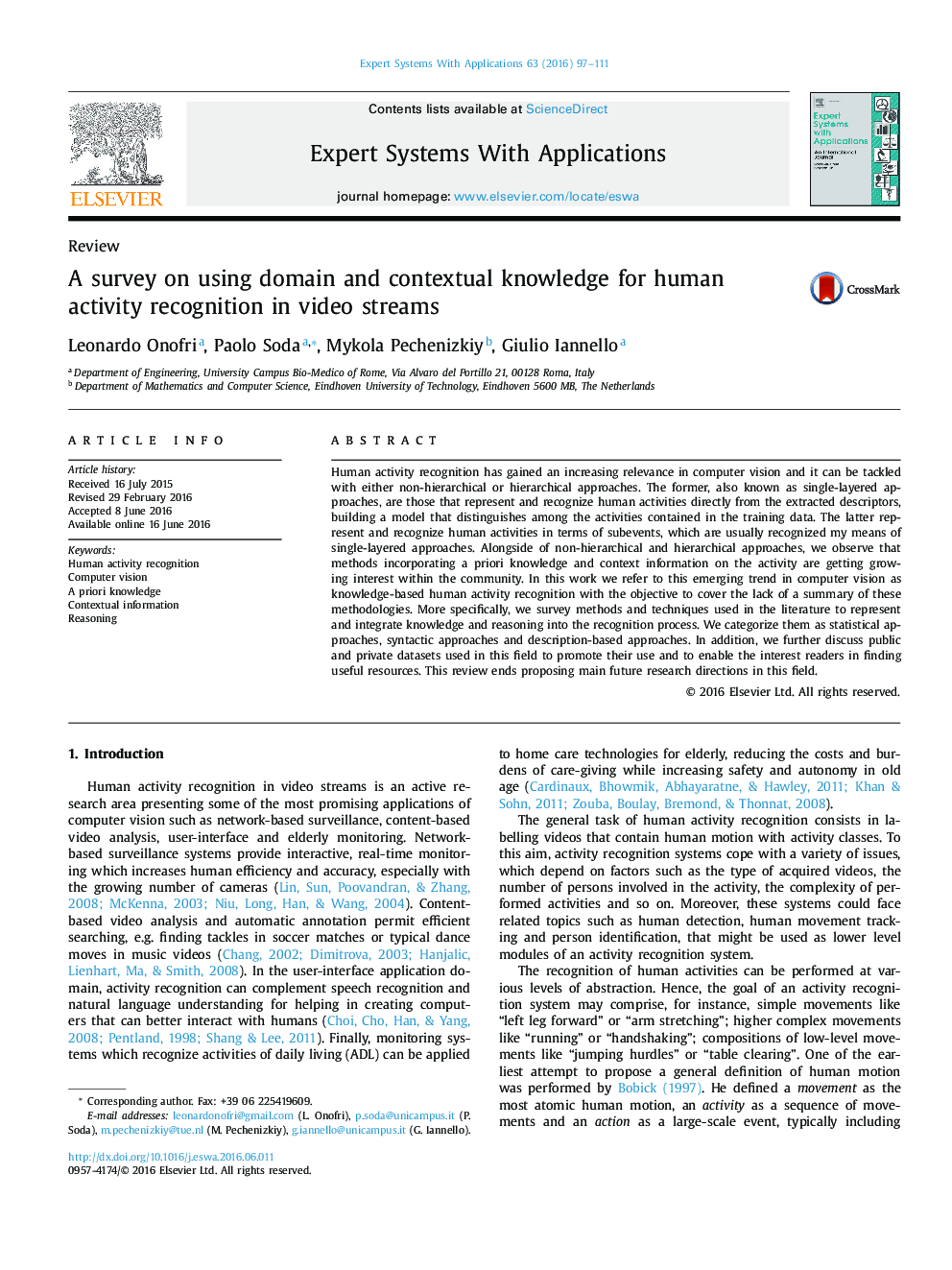| Article ID | Journal | Published Year | Pages | File Type |
|---|---|---|---|---|
| 382979 | Expert Systems with Applications | 2016 | 15 Pages |
•We focus on activity recognition methods in video streams.•We survey methods that incorporate a priori knowledge and context information.•We categorize the surveyed works by the method use for handling the knowledge.•We discuss the surveyed contributions and provide future directions.
Human activity recognition has gained an increasing relevance in computer vision and it can be tackled with either non-hierarchical or hierarchical approaches. The former, also known as single-layered approaches, are those that represent and recognize human activities directly from the extracted descriptors, building a model that distinguishes among the activities contained in the training data. The latter represent and recognize human activities in terms of subevents, which are usually recognized my means of single-layered approaches. Alongside of non-hierarchical and hierarchical approaches, we observe that methods incorporating a priori knowledge and context information on the activity are getting growing interest within the community. In this work we refer to this emerging trend in computer vision as knowledge-based human activity recognition with the objective to cover the lack of a summary of these methodologies. More specifically, we survey methods and techniques used in the literature to represent and integrate knowledge and reasoning into the recognition process. We categorize them as statistical approaches, syntactic approaches and description-based approaches. In addition, we further discuss public and private datasets used in this field to promote their use and to enable the interest readers in finding useful resources. This review ends proposing main future research directions in this field.
